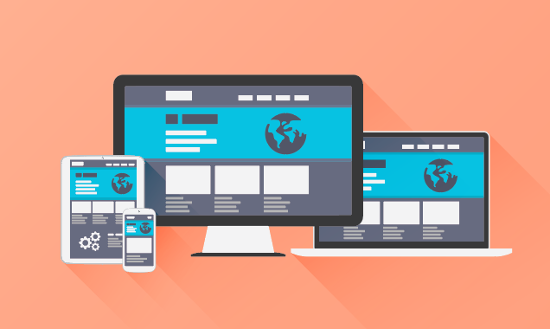The entire world of business has shifted into a customer-centric mode, where audiences and regular customers influence much of what’s happening behind the scenes.
It’s all about improving the general customer experience to make sure you’re building a loyal fanbase, while simultaneously creating a reliable revenue stream.
It’s not that customers never mattered before – of course, they always have. However, what they bring to the table is more important now than it ever has been, primarily due to data analytics and performance metrics.
This phenomenon seems to be happening because competition and risk have grown considerably and continue to increase as more organizations look to make a name for themselves in the marketplace. An unfortunate element everyone also must deal with is that several big players dominate the space, especially in ecommerce and online retail. Just name-dropping Amazon says it all.
Companies must find a way to be competitive, and at times jump ahead of everyone else. The role customers play – or, more specifically, the collective data they can provide – is paramount to making that happen.
Why Is Customer Data So Vital?
Consider it in terms of successes and failures.
When you’re trying to complete a task or project, especially when it’s your first time doing something, the failures matter almost as much – if not more – than the successes. Through repetition, you can learn what works and what doesn’t to better drive future actions and decisions. As you try things out, you are gaining valuable data and information you can use to improve your chances.
The same holds true with the average customer experience. Yes, you want your customers to have an exceptional and positive experience, but that’s not always possible. By learning from the times when they had issues or problems, you can improve future interactions.
In today’s world, real-time information streams offer the opportunity to react or respond immediately, based on the data you are collecting.
You can see, for example, that a customer has abandoned their cart full of goods, allowing you to send them a promotional message or even a discount code to encourage them to go through with the purchase. Or, company reps can see new visitors coming in and what pages they are browsing, then reach out armed with that valuable information.
It’s not just about being more informed, although that certainly changes interactions. It’s about having access to the appropriate data, which can then power any number of decisions, events or proceedings.
In fact, with the right amount of information, you can even cash in on predictive insights to influence how things play out with more of a guaranteed outcome.
What Can Data Do?
By collecting and processing customer data and then extracting insights, companies can develop more successful strategies.
Here are some additional things real-time data can do, and why that matters for the customer experience.
1. Define Customer Needs and Preferences
There is only one way to truly understand your customers, and that’s to listen. But how do you sit down with hundreds, maybe even thousands, of people and hear everything they have to say? You can’t – it’s impossible.
What you can do, however, is build an understanding of customer problems, experiences, expectations and sentiment through the careful analysis of customer data and metrics. Through collective social media insights, for example, you can see how people feel about your brand or products.
Use polls and surveys to collect direct comments. Performance and web traffic data can help you know what your customers are doing, what they’re buying and even the opposite — what they’re not interested in.
All these tactics allow you to better align your business operations and offerings to fulfill customer needs. A great example is how educational institutions are using real-time data to improve student outcomes.
2. Strengthen Customer Loyalty
If a customer feels unsatisfied, you'd better believe they’re going to tell either you or someone else about it. When that happens, if your company is not there to listen, or you cannot show them you care, it’s going to destroy any relationship or rapport you have built.
Real-time data can help you understand how things are playing out, allowing you to take the necessary action. When you can steer an experience or scenario a certain way, to more positive and healthy results, it strengthens loyalty across the board.
Have you noticed a particular subset of customers is unhappy with a product or service?
You can remedy the situation – mitigating fallout – by ensuring their experience improves before it’s even over. Whether it's sending them another, better product, or putting them in touch with the right support rep to speed up their case, there are so many things you can do when you know what’s happening and why.
3. Monitor the Supply Chain
In business, some elements will mostly be out of your control, and the supply chain is one of them.
You can always find new partners, manufacturers or suppliers, sure, but if you’re stuck waiting on a delivery or action, it’s going to lengthen the time everyone else waits too, including your customers. Supply chain delays affect everything along the way – that’s why it’s called a chain in the first place.
With real-time insights coming in about what’s happening, you can make more informed decisions and respond accordingly. Will there be a delay in one of your products due to a supply shortage? You can take immediate action and reach out to customers who have pre-ordered said product, giving them compensation in the meantime or offering an alternative.
Doing this will help cut down on negative results, including outraged or angry reviews and unhappy customers.
Real-time fleet data in transportation and freight helps companies keep an eye on shipments, offering better outcomes for the entire supply chain.
4. Unlock New Opportunities

Is there a specific target audience you overlooked originally? Maybe there’s a better, yet unknown, use for your products, or perhaps you can boost customer retention by making a simple change or update to your policies.
These are just a few examples, but they all highlight the vast amount of opportunity real-time data creates. Suddenly, things you may not have noticed or understood before are right there, ready for you to use.
In health care, for instance, real-time data helps provide immediate tracking of equipment, staff and patients, and even helps unlock new opportunities.
With more data and more insights, you know more, obviously, but that also means you can unlock and identify opportunities you never knew existed. It sparks potential for continual improvement, allowing you to push toward bigger, better, and more successful outcomes for your business.
5. Improve Operational Efficiency
At a glance, it’s not always possible to discern or measure how a particular operation is going, at least not without the right amount of information. Once you set something in motion, you can keep an eye on how things are playing out and make minor adjustments, but for the most part, the outcomes will remain the same.
At least, that used to be how things were in the world of business. Now, it’s all different. You can adjust on the fly, not just to nail down your eventual success, but also to fine-tune operations.
In manufacturing, real-time data affords better productivity and profitability through increased oversight. With real-time data, it becomes possible to improve and optimize efficiency instantly, even during the busiest of times.
You can adjust achieve cost savings, improve output or quantities, boost quality and even launch sooner. It’s all possible because the data flowing in tells you precisely what’s happening and what that means in the long term.
6. Better Personalization
There’s minor personalization – like the option to choose a color or style – and then there’s full personalization, which entails designing, developing and constructing a product to a customer's precise specifications.
In the past, the latter was difficult to achieve, and fulfillment times would likely extend beyond what’s considered normal, because of how much goes into a personalized product or good.
With real-time data, personalization is not just possible – it’s more effective than ever.
Companies like Amazon and Netflix use it to recommend relevant content or products. Some online retailers like ASOS use it to return customers to their preferred browsing page or shopping categories. Tesco uses it to provide personalized promotions and coupons to their regular customers.
In the end, better personalization translates to better experiences for your customers.
7. Cross-Platform and Seamless Experiences

Mobile, desktop, tablets, smart TVs, wearables – there is a near-endless supply of devices consumers now use.
Mobile is one of the most important, yes, but it’s not the only one. So, as a business, you need to ensure you’re delivering the kinds of across-the-board experiences your customers deserve and expect.
One of the ways to do this is to provide a seamless, cross-platform experience that follows them wherever they go. Customers should be able to add a product to their cart on mobile, log in to a desktop computer and jump right to the checkout screen. They want to start watching videos on their phone and then move to their TV, picking up right where they left off.
It’s only possible to make such a thing happen through real-time data, particularly data coming in about customer behaviors, actions and movements.
You Get All This, and More!
Real-time data, such as customer behavior, movements and events, is reshaping the future of retail, both online and off.
If you want to remain competitive, which means providing customers with more modern and personalized experiences, you have to get involved. Investing in real-time data could spell success for your business.
Data offers direct insight into customer needs and demands, strengthens customer loyalty, provides better, more targeted personalization opportunities and drives cross-platform experiences. It can also give you more nuanced controls over the supply chain, affording you more options when something unforeseen occurs – like a supply shortage.
Furthermore, real-time data will help you improve operational efficiency for your entire organization by tapping into what’s happening and what that means for long-term progress.
It increases the customer experience on many levels, and that’s always good for business.


Lexie Lu
Lexie Lu is a freelance graphic designer and blogger. She keeps up with the latest design news and always has some coffee in close proximity. She writes on Design Roast and can be followed on Twitter @lexieludesigner.